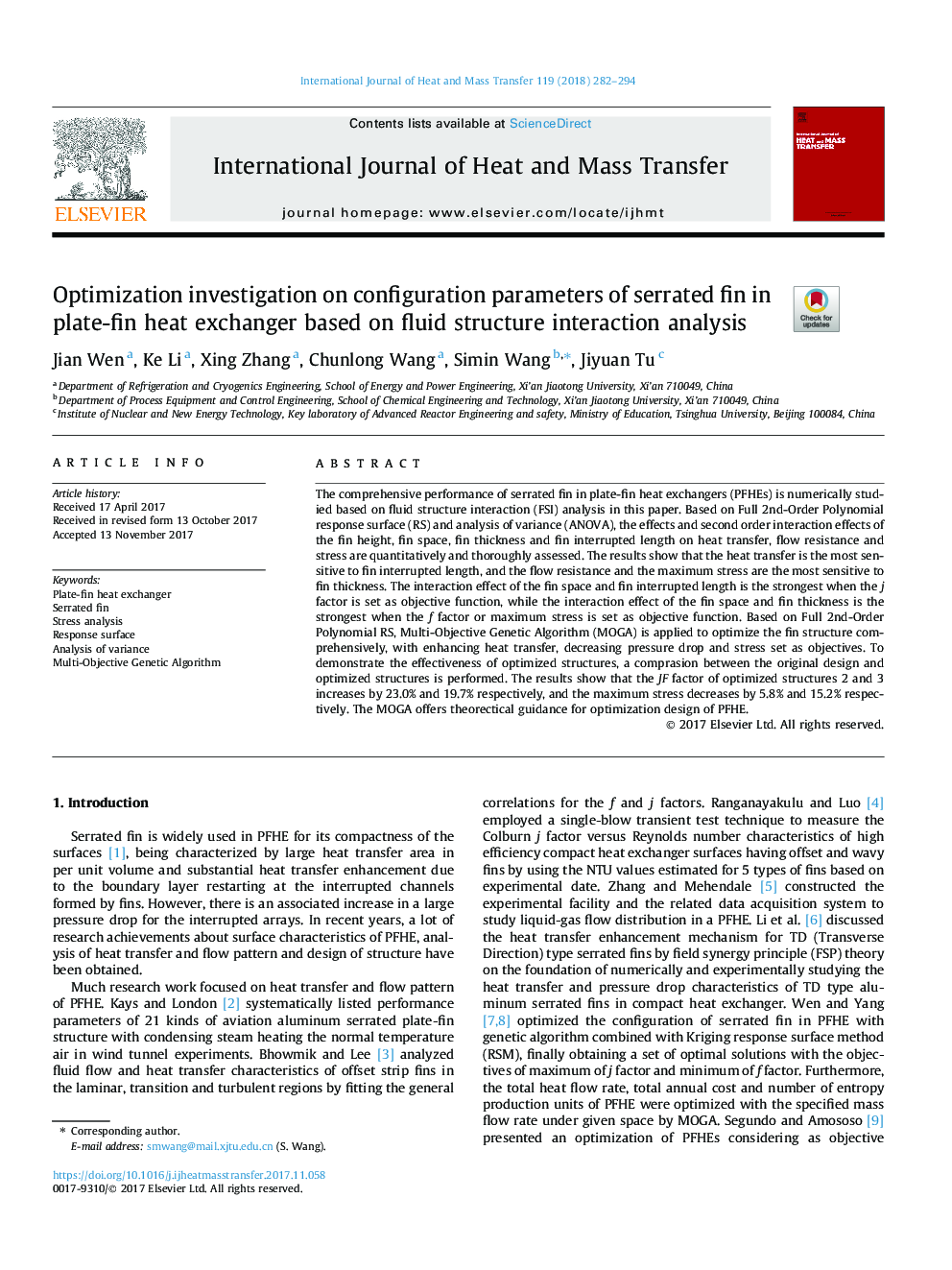| Article ID | Journal | Published Year | Pages | File Type |
|---|---|---|---|---|
| 7054629 | International Journal of Heat and Mass Transfer | 2018 | 13 Pages |
Abstract
The comprehensive performance of serrated fin in plate-fin heat exchangers (PFHEs) is numerically studied based on fluid structure interaction (FSI) analysis in this paper. Based on Full 2nd-Order Polynomial response surface (RS) and analysis of variance (ANOVA), the effects and second order interaction effects of the fin height, fin space, fin thickness and fin interrupted length on heat transfer, flow resistance and stress are quantitatively and thoroughly assessed. The results show that the heat transfer is the most sensitive to fin interrupted length, and the flow resistance and the maximum stress are the most sensitive to fin thickness. The interaction effect of the fin space and fin interrupted length is the strongest when the j factor is set as objective function, while the interaction effect of the fin space and fin thickness is the strongest when the f factor or maximum stress is set as objective function. Based on Full 2nd-Order Polynomial RS, Multi-Objective Genetic Algorithm (MOGA) is applied to optimize the fin structure comprehensively, with enhancing heat transfer, decreasing pressure drop and stress set as objectives. To demonstrate the effectiveness of optimized structures, a comprasion between the original design and optimized structures is performed. The results show that the JF factor of optimized structures 2 and 3 increases by 23.0% and 19.7% respectively, and the maximum stress decreases by 5.8% and 15.2% respectively. The MOGA offers theorectical guidance for optimization design of PFHE.
Keywords
Related Topics
Physical Sciences and Engineering
Chemical Engineering
Fluid Flow and Transfer Processes
Authors
Jian Wen, Ke Li, Xing Zhang, Chunlong Wang, Simin Wang, Jiyuan Tu,
